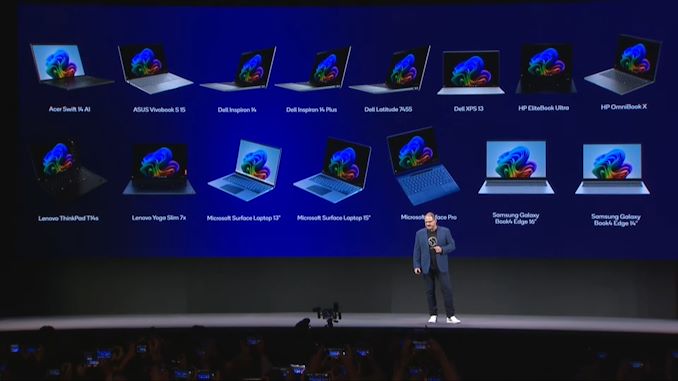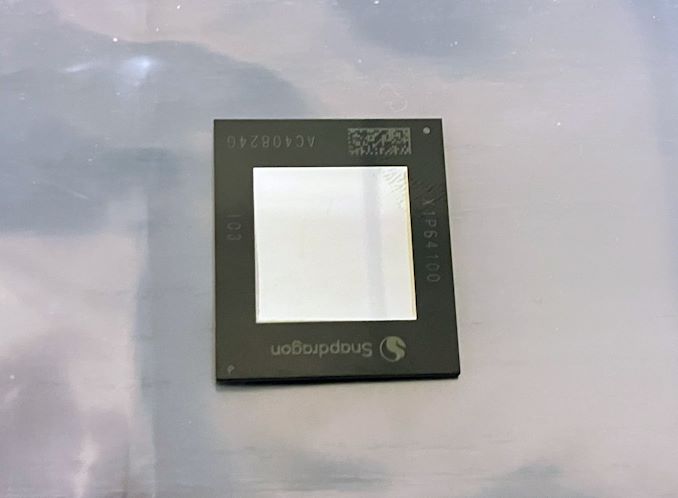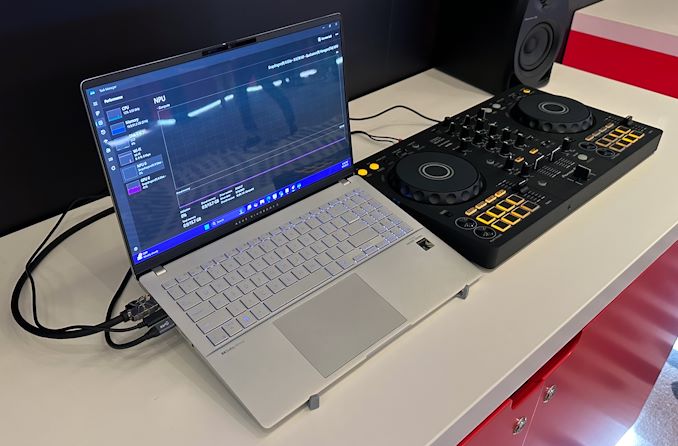The Qualcomm Snapdragon X Architecture Deep Dive: Getting To Know Oryon and Adreno X1
by Ryan Smith on June 13, 2024 9:00 AM EST
The curtains are drawn and it’s almost showtime for Qualcomm and its Snapdragon X SoC team. After first detailing the SoC nearly 8 months ago at the company’s most recent Snapdragon Summit, and making numerous performance disclosures in the intervening months, the Snapdragon X Elite and Snapdragon X Plus launch is nearly upon us. The chips have already shipped to Qualcomm’s laptop partners, and the first laptops are set to ship next week.
In the last 8 months Qualcomm has made a lot of interesting claims for their high-performance Windows-on-Arm SoC – many of which will be put to the test in the coming weeks. But beyond all the performance claims and bluster amidst what is shaping up to be a highly competitive environment for PC CPUs, there’s an even more fundamental question about the Snapdragon X that we’ve been dying to get to: how does it work?
Ahead of next week’s launch, then, we’re finally getting the answer to that, as today Qualcomm is releasing their long-awaited architectural disclosure on the Snapdragon X SoC. This includes not only their new, custom Arm v8 “Oryon” CPU core, but also technical disclosures on their Adreno GPU, and the Hexagon NPU that backs their heavily-promoted AI capabilities. The company has made it clear in the past that the Snapdragon X is a serious, top-priority effort for the company – that they’re not just slapping together a Windows SoC from their existing IP blocks and calling it a day – so there’s a great deal of novel technology within the SoC.
And while we’re excited to look at it all, we’ll also be the first to admit that we’re the most excited to finally get to take a deep dive on Oryon, Qualcomm’s custom-built Arm CPU cores. The first new high-performance CPU design created from scratch in the last several years, the significance of Oryon cannot be overstated. Besides providing the basis of a new generation of Windows-on-Arm SoCs that Qualcomm hopes will vault them into contention in the Windows PC marketplace, Oryon will also be the basis of Qualcomm’s traditional Snapdragon mobile handset and tablet SoCs going forward.
So a great deal of the company’s hardware over the next few years is riding on this CPU architecture – and if all goes according to plan, there will be many more generations of Oryon to follow. One way or another, it’s going to set Qualcomm apart from its competitors in both the PC and mobile spaces, as it means Qualcomm is moving on from Arm’s reference designs, which by their very nature are accessible Qualcomm’s competition as well.
So without further ado, let’s dive in to Qualcomm’s Snapdragon X SoC architecture.
Setting The Stage: Elite, Plus, & Currently Announced SKUs
As a quick refresher, Qualcomm has announced 4 Snapdragon X SKUs thus far, all of which have been made available to device manufacturers for next week’s launch.
| Qualcomm Snapdragon X (Gen 1) Processors | |||||||
| AnandTech | CPU Cores | All Core Max Turbo | Two Core Max Turbo | GPU TFLOPS | NPU TOPS | Total Cache (MB) |
Memory |
| Snapdragon X Elite | |||||||
| X1E-84-100 | 12 | 3.8 GHz | 4.2 GHz | 4.6 | 45 | 42 | LPDDR5X-8448 |
| X1E-80-100 | 12 | 3.4 GHz | 4.0 GHz | 3.8 | 45 | 42 | LPDDR5X-8448 |
| X1E-78-100 | 12 | 3.4 GHz | 3.4 GHz | 3.8 | 45 | 42 | LPDDR5X-8448 |
| Snapdragon X Plus | |||||||
| X1P-64-100 | 10 | 3.4 GHz | 3.4 GHz | 3.8 | 45 | 42 | LPDDR5X-8448 |
Three of these are “Elite” SKUs, which are defined by their inclusion of 12 CPU cores. Meanwhile Qualcomm is offering a single “Plus” SKU (thus far), which cuts that down to 10 CPU cores.
Officially, Qualcomm isn’t assigning any TDP ratings to these chip SKUs, as, in principle, any given SKU can be used across the entire spectrum of power levels. Need to fit in a top-tier chip in a fanless laptop? Just turn down the TDP to match your power/cooling capabilities. That said, to hit the highest clockspeed and performance targets of Qualcomm’s chips, a good bit of cooling and power delivery are required. And to that end we aren’t likely to see X1E-84-100 show up in fanless devices, for example, as its higher clockspeeds would largely be wasted by a lack of thermal headroom. This won’t stop lower-performance chips from being used in bigger devices as budget options, but the SKU table can also be considered as being roughly sorted by TDP.
And while not the subject of today’s disclosure, don’t be surprised to see further Snapdragon X chip SKUs further down the line. It’s become a poorly kept secret that Qualcomm has at least one further Snapdragon X die in development – a smaller die with presumably fewer CPU and GPU cores – which we expect would make up a more budget-focused set of SKUs farther down the line. But for now, Qualcomm is starting with their big silicon, and consequently their highest-performing options.
Even though the first Snapdragon X devices won’t reach consumers until next week, it’s already clear that, judging by OEM adoption, this is going to be Qualcomm’s most successful Windows-on-Arm SoC to date. The difference in adoption compared to the Snapdragon 8cx Gen 3 is practically night and day; Qualcomm’s PC partners have already developed over a dozen laptop models using the new chips, whereas the last 8cx could be found in all of two designs. So with Microsoft, Dell, HP, Lenovo, and others all producing Snapdragon X laptops, the Snapdragon X ecosystem is starting off much stronger than any Windows-on-Arm offering before it.
| Snapdragon Compute (Windows-on-Arm) Silicon | ||||
| AnandTech | Snapdragon X Elite | Snapdragon 8cx Gen 3 |
Snapdragon 8cx Gen 2 |
Snapdragon 8cx Gen 1 |
| Prime Cores | 12x Oryon 3.80 GHz 2C Turbo: 4.2GHz |
4x C-X1 3.00 GHz |
4 x C-A76 3.15 GHz |
4 x C-A76 2.84 GHz |
| Efficiency Cores | N/A | 4x C-A78 2.40 GHz |
4 x C-A55 1.80 GHz |
4 x C-A55 1.80 GHz |
| GPU | Adreno X1 | Adreno 8cx Gen 3 |
Adreno 690 | Adreno 680 |
| NPU | Hexagon 45 TOPS (INT8) |
Hexagon 8cx Gen 3 15 TOPS |
Hexagon 690 9 TOPS |
Hexagon 690 9 TOPS |
| Memory | 8 x 16-bit LPDDR5x-8448 135GB/sec |
8 x 16-bit LPDDR4x-4266 68.3 GB/sec |
8 x 16-bit LPDDR4x-4266 68.3 GB/sec |
8 x 16-bit LPDDR4x-4266 68.3 GB/sec |
| Wi-Fi | Wi-FI 7 + BE 5.4 (Discrete) |
Wi-Fi 6E + BT 5.1 | Wi-Fi 6 + BT 5.1 | Wi-Fi 5 + BT 5.0 |
| Modem | Snapdragon X65 (Discrete) |
Snapdragon X55/X62/X65 (Discrete) |
Snapdragon X55/X24 (Discrete) |
Snapdragon X24 (Discrete) |
| Process | TSMC N4 | Samsung 5LPE | TSMC N7 | TSMC N7 |
A big part of that, no doubt, comes down to the strength of Qualcomm’s architecture. The Snapdragon X packs what Qualcomm promotes as a vastly more powerful CPU than the Cortex-X1 core found on the most recent (circa 2022) 8cx chip, and it’s being built on a highly competitive process with TSMC’s N4 node. So if all of the stars are properly aligned, the Snapdragon X chips should be a massive step up for Qualcomm.
Meanwhile, there are two other pillars that are helping to hold up this launch. The first, of course, is AI, with the Snapdragon X being the first Copilot+ capable SoC for use with Windows. Requiring a 40+ TOPS NPU, the 45 TOPS Hexagon NPU in the Snapdragon X makes the SoC the first such chip to offer this much performance for neural network and other model inference. The second pillar, in turn, is power. Qualcomm is promising nothing short of amazing battery runtimes with their SoC, leveraging their years of experience producing mobile SoCs. And if they can deliver on it while also hitting their performance goals – allowing users to have their cake and eat it, too – then it will setup the Snapdragon X chips and the resulting laptops nicely.
Ultimately, Qualcomm is looking for their Apple Silicon moment – a repeat of the performance and battery life gains that Apple reaped when switching from Intel’s x86 chips to their own custom Arm-based Apple Silicon. And partner Microsoft, for their part, really, really wants a MacBook Air competitor in the PC ecosystem. It’s a tall order, not the least of which is because neither Intel or AMD have been sitting still over the past few years, but it’s not out of reach.
With that said, Qualcomm and the Windows-on-Arm ecosystem do face some obstacles that means Snapdragon X’s launch trajectory can never quite match Apple’s. Besides the obvious lack of a single unified party developing the hardware and software ecosystem (and all but shoving developers forward to produce software for it), Windows comes with the expectations of backwards compatibility and the legacy baggage that entails. Microsoft, for its part, has continued to work on their x86/x64 emulation layer, which now goes by the name Prism, and the Snapdragon X launch will be the first time it really gets put to the test. But even with years of Arm support within Windows, the software ecosystem is still slowly taking shape, so Snapdragon X will be more reliant on x86 emulation than Apple ever was. Windows and macOS are very distinct operating systems, both in terms of their histories and their owners’ development philosophies, and this is going to be especially apparent in the first years of the Snapdragon X’s lifetime.














51 Comments
View All Comments
skavi - Friday, June 14, 2024 - link
great article. it’s nice to see quality stuff like this. Replynandnandnand - Friday, June 14, 2024 - link
"Officially, Qualcomm isn’t assigning any TDP ratings to these chip SKUs, as, in principle, any given SKU can be used across the entire spectrum of power levels."A Qualcope since they are differentiating the SKUs by max turbo clocks. Reply
eastcoast_pete - Friday, June 14, 2024 - link
First, thanks Ryan! Glad to see you doing deep dives again.Questions: 1. Anything known about if and how well the Snapdragon Extreme would pair up with a dGPU? The iGPU's performance is (apparently) in the same ballpark as the 780M and the ARC in Meteor Lake, but gaming or workstation use would require a dGPU like a 4080 mobile Ada or the pro variant. So, any word from Qualcomm on playing nice with dGPUs?
2. The elephant in the room on the ARM side is the unresolved legal dispute between Qualcomm and ARM over whether Qualcomm has the right to use the cores developed (under an ALA) by Nuvia for the development of ARM-based cores for server CPUs in (now) client SoCs. Any news on that? Some writers have speculated that this uncertainty is one, maybe the key reason for Microsoft to also encourage Nvidia and MediaTek to develop client SoCs based on stock ARM architecture. MS might hedge its bets here, so they don't put all the work (and PR) into developing Windows-on ARM and "AI" everywhere and find themselves with no ARM Laptops available to customers if ARM prevails in court. Reply
Ryan Smith - Friday, June 14, 2024 - link
1) That question isn't really being entertained right now since the required software does not exist. If and when NVIDIA has a ARMv8 Windows driver set, then maybe we can get some answers.2) The Arm vs. Qualcomm legal dispute is ongoing. The court case itself doesn't start until late this year. In the meantime, any negotiations between QC and Arm would be taking place in private. There's not really much to say until that case either reaches its conclusion - at which point Arm could ask for various forms of injunctive relief - or the two companies come to an out-of-court settlement. Reply
eastcoast_pete - Saturday, June 15, 2024 - link
Thanks Ryan! Looking forward to the first tests. Replycontinuum - Saturday, June 15, 2024 - link
Great article, can't wait til actual reviews next week. Thanks Ryan! ReplyMooseMuffin - Saturday, June 15, 2024 - link
When should we expect to see Oryon cores in android phones? ReplyRyan Smith - Sunday, June 16, 2024 - link
Snapdragon 8 Gen 4 late this year. Replyabufrejoval - Thursday, June 20, 2024 - link
So the embargos have lifted......and the silence is deafening?
Is this Microsoft's Vision Pro moment? Reply
eastcoast_pete - Monday, June 24, 2024 - link
Sure looks like it. Copilot and Recall are a potential privacy and confidentiality nightmare (MS has promised/threatened it can remember pretty much anything); and the integration of "AI" into something that is actually useful remains elusive. I am a bit surprised that Qualcomm hasn't taken up some of that slack. For an example of useful AI-supported functionality: On at least some smartphones (Pixel, Samsung's Galaxy S24 models) one can get pretty good instant translation and transcription, and do so offline (!); no phoning home to the mothership required. But, that uses Google's software, so it's not coming to a Microsoft device near you or me anytime soon. Something like that in Windows, but with demonstrably lower power consumption than doing so on the CPU or GPU would show some value an NPU could bring. Absent that, the silence out of Redmond is indeed deafening. Reply